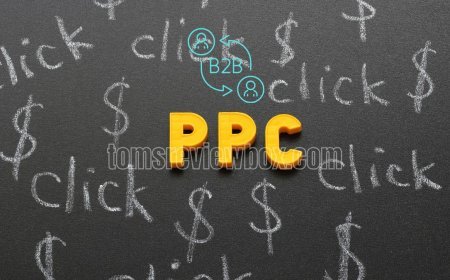A small business is defined as: Decoding Official Standards
Discover the official standards and characteristics that define a small business. Learn how to differentiate your business in this comprehensive guide.

A small business is defined as a privately owned enterprise with a small number of employees and relatively low revenue compared to larger corporations. Typically, these businesses operate with fewer than 500 employees, depending on industry standards and local regulations. If you're looking for guidance on defining and managing a small business, you're in the right place. With years of expertise in supporting small enterprises, we can provide the insights and strategies you need to succeed.
A small business is defined as a company with fewer than 500 employees in most industries, though this number can vary. For example, the U.S. Small Business Administration (SBA) generally considers businesses with up to 1,500 employees and annual receipts up to $41.5 million as small businesses in certain sectors. However, the standard for small business size can differ significantly depending on the industry and country. These businesses are crucial to the economy, often driving innovation and job creation.
If you need detailed guidance on starting, managing, or growing a small business, we have plenty of resources and expert advice to share. Whether you need help with funding, marketing strategies, or regulatory compliance, our comprehensive support can make a significant difference.
Key Takeaways
- Know the Criteria: Understanding the specific criteria that define a small business is crucial for accurate classification.
- Seek Official Guidelines: Refer to official standards and definitions to determine the status of a business correctly.
- Evaluate Carefully: Take into account various factors like revenue, number of employees, and industry norms when determining the size of a business.
- Accuracy is Key: Correctly classifying a business as small is essential for accessing benefits, support, and opportunities tailored to small businesses.
- Consider Industry Differences: Different industries may have specific standards for what constitutes a small business, so it's important to be aware of these variations.
- Know Your Peers: Understanding the demographics and characteristics of small businesses can provide valuable insights into your own business landscape.
Understanding Small Businesses
Defining Criteria
Small businesses are typically characterized by their size, revenue, and number of employees. These key elements help in distinguishing them from larger corporations. The size of a business is often measured by factors such as annual revenue or the number of employees it has. Having clear criteria for categorizing businesses is crucial for accurate assessments and comparisons.
Importance of Size Standards
Standardized size definitions are crucial for ensuring consistency in classifying small businesses. Size standards play a significant role in determining whether a business qualifies as a small entity or not. By adhering to specific size standards, there is clarity and uniformity in identifying and categorizing businesses accurately.
Factors in Definition
When defining small businesses, various factors come into play, including the industry they operate in, their revenue generation, and the number of individuals they employ. The industry sector can significantly impact how a business is classified as small or large. The revenue generated by a business and its employment figures contribute to its classification.
Official Standards Explained
SBA's Definition
The Small Business Administration (SBA) plays a crucial role in defining small businesses. It sets criteria based on factors like revenue, number of employees, and industry type. Adherence to these guidelines is essential for accessing benefits like loans and government contracts. The SBA's definitions can vary significantly across industries and sectors, reflecting the diverse nature of businesses in different fields.
When it comes to classification, the SBA's standards are not one-size-fits-all. For instance, a manufacturing company with 500 employees might still be considered small, while a retail store with the same number could be classified differently. This variation ensures that businesses receive tailored support based on their specific needs and challenges.
Industry-Specific Standards
Each industry has its own set of criteria for defining small businesses. For example, in the construction sector, size standards are determined by average annual receipts or number of employees. On the other hand, technology companies may be classified based on their employee count and revenue thresholds. Adhering to these industry-specific standards is vital for accurate classification and eligibility for various programs.
In the healthcare industry, small businesses may be defined based on the number of full-time employees or annual revenue. Meeting these criteria opens up opportunities for specialized funding and assistance programs tailored to healthcare providers. By aligning with industry-specific standards, businesses can access resources designed to address their unique challenges and promote growth.
Determining Business Status
Qualifying Criteria
To qualify as a small business, companies must meet specific criteria. These include revenue thresholds and employee counts. Different entities set these criteria. For example, the Small Business Administration (SBA) in the United States defines small businesses based on industry-specific standards.
Meeting these qualifying criteria is crucial for a business's classification as small. It determines the eligibility for various benefits and programs aimed at supporting small businesses. For instance, access to government contracts and loans often depends on meeting these criteria.
- Businesses must meet revenue and employee count thresholds
- Small Business Administration sets industry-specific standards
- Qualifying impacts eligibility for support programs like government contracts and loans
Classification Insights
The process of classifying businesses based on size involves challenges and benefits. One challenge is the varying definitions of small businesses across different industries and regions. This can lead to inconsistencies in classification.
Accurate classification is vital for ensuring that small businesses receive the appropriate support. It helps in tailoring resources, training, and funding to meet the unique needs of smaller enterprises.
- Challenges include varying definitions across industries and regions
- Accurate classification ensures tailored support for small businesses
- Benefits include appropriate allocation of resources and funding
Importance of Correct Classification
Benefits for Small Businesses
Small businesses enjoy various advantages when classified correctly. Firstly, they often qualify for government contracts and incentives reserved for small enterprises. Being recognized as a small business can open doors to specialized funding programs.
Moreover, small businesses have access to dedicated support services tailored to their needs. This includes mentorship programs, training resources, and networking opportunities that can foster growth and sustainability in the long run.
In terms of growth opportunities, the classification as a small business can lead to preferential treatment in procurement processes. This can result in increased visibility and chances to secure contracts with larger organizations, ultimately expanding the business's reach.
Drawbacks to Consider
Despite the benefits, there are some drawbacks associated with being classified as a small business. One significant challenge is the limited availability of resources, including capital and manpower. This constraint can hinder expansion and innovation within the business.
Another drawback is the heightened level of competition faced by small businesses in saturated markets. With larger corporations dominating industries, smaller entities may struggle to gain market share and establish themselves effectively.
To address these challenges, small businesses must be proactive in seeking solutions. This involves strategic planning, leveraging niche markets, and investing in innovative strategies to differentiate themselves from competitors.
Factors Determining Size
Revenue and Employee Count
Small businesses are primarily defined by their revenue and employee count. A company's revenue is a crucial metric that determines its size classification. For instance, in the United States, small businesses typically have annual revenues below $1 million.
When it comes to employee count, small businesses usually have fewer than 500 employees. This threshold varies by industry, with some sectors considering companies with up to 1,500 employees as small businesses. The correlation between revenue, employee count, and small business status is significant in determining the overall scale of an enterprise.
Market Influence
Small businesses play a vital role in shaping the market landscape through their innovative practices and competitive spirit. These enterprises often introduce unique products or services that drive market trends and consumer preferences. By fostering competition, small businesses contribute to market diversity and customer choice.
In various industries such as technology, retail, and healthcare, small businesses have a notable impact on market dynamics. They bring fresh ideas to the table, challenge established players, and create opportunities for growth and development. The presence of small businesses ensures a vibrant marketplace with options for consumers across different sectors.
Industry-Specific Standards
Varied Thresholds
Small businesses are defined by varying thresholds that consider industry, revenue, and employment. These thresholds differ significantly across sectors, with some industries having lower revenue requirements than others. For example, a manufacturing business might have a higher revenue threshold compared to a service-based business.
The criteria for defining small businesses often vary based on the industry's specific characteristics. Sectors like technology or healthcare might have different employee count thresholds compared to retail or construction. This variation ensures that the classification is tailored to the unique needs and challenges of each sector.
To ensure fair classification and support for small businesses, it is crucial to establish consistent thresholds across industries. Consistency helps in creating a level playing field for businesses operating in different sectors. It also promotes transparency and fairness in accessing benefits reserved for small enterprises.
Examples by Sector
In the retail sector, a family-owned boutique with less than 50 employees can qualify as a small business. On the other hand, in the agriculture sector, a farm generating annual revenue below a specific threshold may be considered small-scale.
Small businesses in the tech industry often focus on innovation and agility to stay competitive. Start-ups offering software solutions or app development services typically fall under the small business category due to their relatively low revenue and employee count.
The diversity of small businesses across various sectors highlights the vibrancy of entrepreneurship. From local cafes and boutiques to tech start-ups and consulting firms, small businesses play a vital role in driving economic growth and innovation across different industries.
Small Business Demographics
Owner Backgrounds
Small business owners come from diverse backgrounds, ranging from various educational levels to unique professional experiences. This diversity contributes to the rich tapestry of small businesses in different industries. Owners with entrepreneurial backgrounds often bring innovative ideas and strategies to their businesses. On the other hand, individuals transitioning from corporate careers may leverage their expertise to establish successful ventures.
The background of small business owners plays a crucial role in determining the classification of a business as "small." For instance, a business owned by someone with extensive industry experience may have more resources and capabilities, leading to its classification as a larger small business. In contrast, a venture started by a first-time entrepreneur with limited capital might fall into the micro-business category.
Within the small business community, owner backgrounds vary significantly, reflecting a blend of skills, knowledge, and motivations. Some entrepreneurs start businesses based on personal passions or hobbies, while others identify market gaps and seize opportunities for growth. This diversity not only enriches the entrepreneurial landscape but also fosters creativity and innovation across different sectors.
Geographic Distribution
Small businesses are distributed across various regions, encompassing urban centers, suburban areas, and rural communities. This distribution reflects the dynamic nature of entrepreneurship and economic activity within different geographic locations. Urban areas often host a higher concentration of small businesses due to increased consumer demand and access to resources.
Geographic location can significantly impact the classification and success of small businesses. For example, businesses located in thriving urban hubs may benefit from greater visibility, foot traffic, and networking opportunities compared to those in rural settings. Proximity to suppliers, customers, and potential partners can influence operational efficiency and growth prospects for small enterprises.
The geographic distribution of small businesses is influenced by factors such as population density, market demand, infrastructure availability, and regulatory environment. These variables shape the entrepreneurial landscape in each region, determining the types of businesses that thrive and the challenges they face. By adapting to local conditions and leveraging regional strengths, small business owners can optimize their chances of success.
Closing Thoughts
Understanding the criteria for small businesses is crucial. By correctly classifying your business, you can access tailored support and opportunities, ensuring sustainable growth. Knowing the industry-specific standards and the factors that determine your business size empowers you to make informed decisions that benefit your venture. Small business demographics shed light on the diverse landscape you operate in, offering insights into market trends and competition.
Take the time to assess your business status accurately. Ensure you meet the official standards and leverage your small business classification to your advantage. Stay informed about industry benchmarks and adapt strategically to maximize your potential for success.
Frequently Asked Questions
What is the official definition of a small business?
A small business is officially defined based on criteria such as number of employees, annual revenue, and industry type. These criteria vary by country and industry.
How can one determine the status of their business?
To determine if your business qualifies as a small business, assess factors like annual revenue, number of employees, and industry standards. Consult official guidelines for accurate classification.
Why is it important to correctly classify a business as small?
Correctly classifying a business as small ensures eligibility for benefits like tax incentives, government contracts, and funding opportunities. It also helps in benchmarking against industry standards.
What are the key factors that determine the size of a small business?
The size of a small business is determined by factors such as annual revenue, number of employees, market share, and industry regulations. These factors help in categorizing businesses effectively.
Are there specific standards for different industries regarding small businesses?
Yes, different industries have specific standards for defining small businesses based on variables like revenue thresholds, employee count, and market competitiveness. Understanding these industry-specific standards is crucial for accurate classification.
What do demographics reveal about small businesses?
Small business demographics provide insights into the characteristics of owners, employees, locations, and growth trends within the sector. Analyzing demographics helps in understanding the diverse landscape of small businesses.
What's Your Reaction?







































![MacBook Pro M5: All the features and specs you need to know [LEAKS REVEALED]](https://tomsreviewbox.com/uploads/images/202502/image_430x256_67bd6d7cd7562.jpg)



























